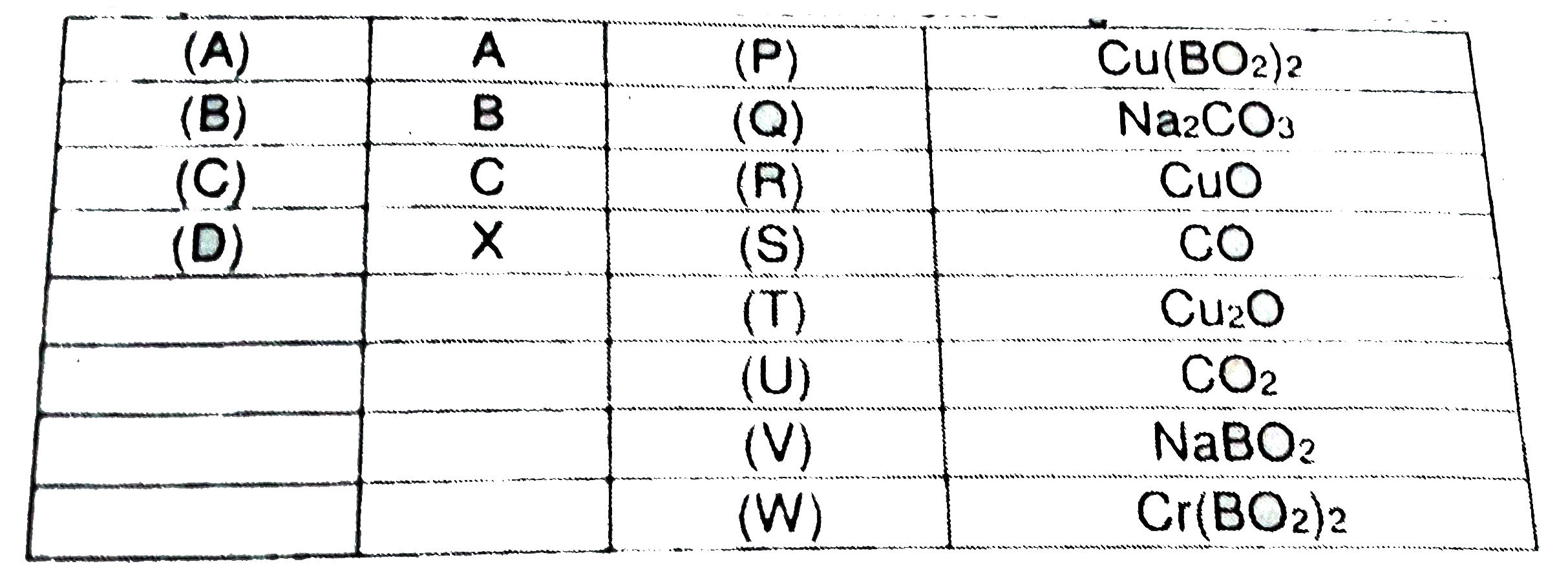When CaO is heated in an oxy-hydrogen flame,
it decomposes to give oxygen
it melts to give fused CaO
it becomes incandescent
no observable change takes place.
The correct Answer is:C
To solve the question "When CaO is heated in an oxy-hydrogen flame, what happens?", we can follow these steps:
Step 1: Understand the Components
- Calcium Oxide (CaO): This is a chemical compound commonly known as quicklime.
- Oxy-Hydrogen Flame: This flame is produced by burning a mixture of hydrogen (H2) and oxygen (O2) gases. It burns at a very high temperature, approximately 2572 degrees Celsius.
Step 2: Heating CaO
- When CaO is subjected to the high temperatures of the oxy-hydrogen flame, it undergoes a physical change rather than a chemical decomposition.
Step 3: Observing the Effect
- As CaO is heated, it becomes incandescent. Incandescence is the emission of light from a hot body. The light emitted is known as "limelight."
Step 4: Analyzing the Options
- Option A: It decomposes to give oxygen. (Incorrect)
- Option B: It melts to give CO. (Incorrect)
- Option C: It becomes incandescent. (Correct)
- Option D: No observable changes take place. (Incorrect)
Conclusion
- The correct answer is Option C: It becomes incandescent.
- Calcium Oxide (CaO): This is a chemical compound commonly known as quicklime.
- Oxy-Hydrogen Flame: This flame is produced by burning a mixture of hydrogen (H2) and oxygen (O2) gases. It burns at a very high temperature, approximately 2572 degrees Celsius.
- When CaO is subjected to the high temperatures of the oxy-hydrogen flame, it undergoes a physical change rather than a chemical decomposition.
- As CaO is heated, it becomes incandescent. Incandescence is the emission of light from a hot body. The light emitted is known as "limelight."
- Option A: It decomposes to give oxygen. (Incorrect)
- Option B: It melts to give CO. (Incorrect)
- Option C: It becomes incandescent. (Correct)
- Option D: No observable changes take place. (Incorrect)
- The correct answer is Option C: It becomes incandescent.
Topper's Solved these Questions
- THE s - BLOCK ELEMENTSBOOK - ICSECHAPTER - THE s - BLOCK ELEMENTSEXERCISE - TRUE OR FALSE. TYPE QUESTIONS (State whether the following statements are True or False:
25 Videos
- THE s - BLOCK ELEMENTSBOOK - ICSECHAPTER - THE s - BLOCK ELEMENTSEXERCISE - FILL IN THE BANKS. TYPE QUESTIONS
25 Videos
- THE s - BLOCK ELEMENTSBOOK - ICSECHAPTER - THE s - BLOCK ELEMENTSEXERCISE - ESSAY (LONG ANSWER) TYPE QUESTIONS
56 Videos
- STRUCTURE OF ATOMBOOK - ICSECHAPTER - STRUCTURE OF ATOMEXERCISE - NCERT Textbook Exercises
67 Videos
Similar Questions
Knowledge Check
What happen when a mixture of cobalt oxide and borax is heated in a flame on a loop of platinum wire?
AA transparent white heat is formedBA bright pind coloured NaBO2 bead is formed.CA blue coloured Co(BO2)2 bead is formedDA red coloured CO(BO2)2 bead is formed.
What is the composition of the bead obtained when borax is neated in the flame?
View SolutionHow does the atomic hydrogen or oxy-hydrogen torch funtion for cutting and welding purposes? Explain.
View SolutionState with equations what happens when borax is heated on a platinum wire loop and to resulting transparent mass, a mixture amount of CuO is added and the mixture is again heated.
(a) First in the oxidising flame and
(b) Then in the reducing flame of a Bunsen burner ?
View SolutionWhen borax bead containing a small amount of metal salt is heated in reducing flame of bunser burner, the colour of the bead after heating was blue . The metal present in the salt would be
View SolutionWhat happens when a mixture of acetylene and hydrogen is passed over heated nickel at 573 K?
View SolutionCuCO3 was strongly heated to obtain a residue A and gas B. The residue obtained was treated with a salt of sodium 'X' and oxide Y, which produced a blue colored glassy compound C on heating in oxidising flame. The same combination of x and Y gave a green colored glassy compound D when Cr2(SO4)3 was heated with them in oxidizing flame. Match the following accordingly :

View SolutionWhich of the following has highest heat of hydrogenation:
View Solution
